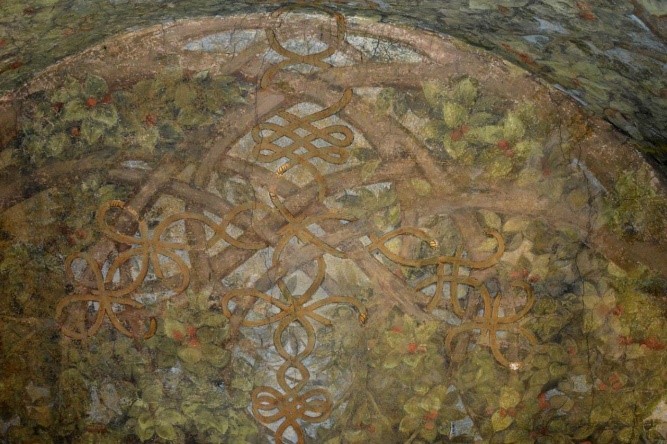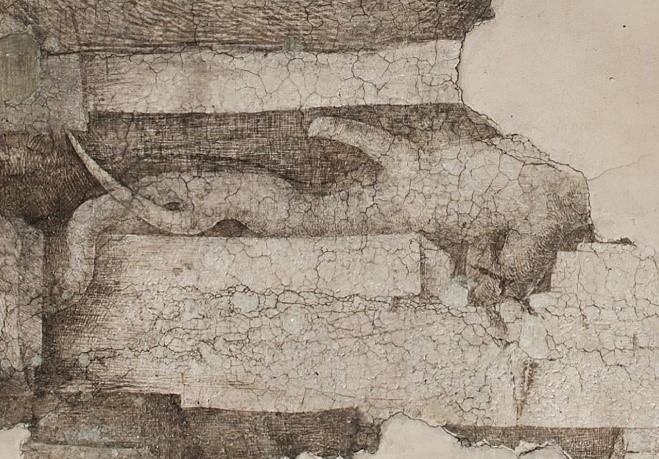The Genius of Leonardo celebrates Ludovico il Moro with silk and mulberry

Mulberry silk is the protagonist of Renaissance Milan. 1498, Sforza Castle. Duke Ludovico Sforza enters for the first time in the Hall that will later be called “ of the Boards ” to verify the work, commissioned to Leonardo Da Vinci only five months earlier. A rectangular room, on the ground floor of the Sforza Castle, the longest side of about fifteen meters, located in the northern corner of the Castle.
A project to give the Milanese residence an element of pure inspiration and exaltation of nature , but not only.
Our imagination lingers on the wonder in the Duke's expression, identifying with the same sensations that, 521 years later, the restoration now gives us. In recent days, the Regional Directorate for Cultural and Landscape Heritage of Lombardy has restored and inaugurated this room, presenting it as one of the most important events to commemorate the 500th anniversary of Leonardo da Vinci 's death.

The Sala delle Asse, so called because of the series of boards that are believed to have once covered the walls to insulate them, represented a real challenge for Leonardo . It was an initial experiment with illusory decorations with a naturalistic connotation that, in the spirit of Leonardo's project, was meant to recreate an intimate space within a closed and severe architecture such as that of the Sforza Castle. The symbolism used makes it a container capable of evoking, through nature, the virtues of wisdom, prudence and fortitude to celebrate Ludovico il Moro.
The Mulberry was chosen by Leonardo as a botanical and natural reference
Pietro Marani is certainly one of the greatest experts and scholars of Leonardo 's art. In 1982 he identified the eighteen trees depicted as Mulberry trees, giving us an interesting explanation.
Why the Mulberry and the reference to Mulberry silk ?
Because “Il Moro” derives from Gelso from the dialect Moròn and Latin Morus.
Leonardo was a careful scholar, among his favorite authors was the writer-philosopher Pliny the Elder who, in the Naturalis historia that Leonardo knew well, states: "some plants flower during germination and ripen more quickly: among these is the mulberry tree , which of the cultivated plants is the last to sprout, as it does so only when the cold is over, and for this reason it is called the wisest of plants . But when it begins to sprout, it does so even in the space of a single night, so much so that you can even hear it making noise"). Hence the passage: Ludovico , the Moor , the Mulberry Tree , wisdom and prudence .
For Leonardo, Mulberry silk was a clear reference to the economy of the Duchy of Milan, linked to the growth, breeding and production of silkworms and Mulberry Silk with notable increases in growth and the birth of numerous silk factories. A tribute to the economic productivity of Sforza Milan.

The fact, not by chance, that the trunks of the mulberry trees take on the shape and place of columns, as depicted by Leonardo, probably recalling Bramante's fifteenth-century architecture of the columns of the rectory of Sant'Ambrogio in Milan, celebrates the strength and solidity of Ludovico seen as a pillar of the Sforza state.
To celebrate the event fully, a few steps from the Sale delle Asse, a new pergola has been installed on which 18 Mulberry trees will grow. The Mulberry and its wisdom come back to life in Milan.































































































